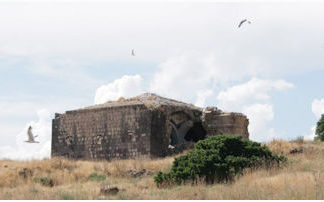By Heide Rieck-Wotke
Special to the Mirror-Spectator
BOCHUM, Germany — What do we know about the footprints left since the Middle Ages in Armenia, footprints made by German emperors, bishops, researchers, artists, farmers and mountain climbers? This is the question that Armenian historian Azat Ordukhanyan delved into during a discussion with German author Heide Rieck on March12 in the Bochum University. Ordukhanyan, who is the president of the Armenian Academic Assocation 1860, has been collaborating with author Rieck on Armenian cultural events over the past several years in this city in Germany’s Ruhr region. Illustrations projected onto a screen brought the lecture to life for the capacity crowd.
The history of Germans in Armenia follows two main historical routes: the first, in the wake of the Crusades, leads through Cilicia (in today’s Turkey), the second goes from Ulm, along the Danube to the Black Sea and then via Odessa overland towards the Caucasus into the region of today’s Republic of Armenia.
As a typical example of the many German aristocrats and church leaders who crossed the Armenian Kingdom of Cilicia (1080-1375) on their way to Jerusalem in the Crusades, Ordukhanyan presented the story of the end of the life of German-Roman Emperor Frederick I, known as Barbarossa. In 1190, on his crusade to Jerusalem, Barbarossa carried with him a crown, which he planned to place on the head of the Armenian Prince Levon II, making him King of Cilicia. On the evening before the festive ceremony, the German emperor wanted to refresh himself in the waters of the briskly flowing Calycadnus river. But he was never to return to the home of his host. Who can imagine what a mood Levon II fell into when he learned that his high-ranking guest from Germany had drowned? Now there was no joyous coronation celebration. A funeral instead.







